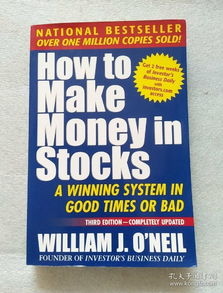How to Make Money in a Bearish Market
Investing in a bearish market can be challenging, but it’s not impossible to make money. A bearish market is characterized by falling prices and negative investor sentiment. However, with the right strategies and knowledge, you can navigate these turbulent times and potentially profit. Here’s a detailed guide on how to make money in a bearish market.
Understand the Bearish Market

Before diving into strategies, it’s crucial to understand what a bearish market is. A bearish market occurs when the stock market’s overall value declines by 20% or more over a two-month period. This decline is often driven by economic factors, such as inflation, rising interest rates, or geopolitical tensions.
1. Diversify Your Portfolio

Diversification is key to mitigating risk in a bearish market. By spreading your investments across various asset classes, sectors, and geographical regions, you can reduce the impact of a downturn in any one area. Consider including the following in your diversified portfolio:
- Stocks: Look for companies with strong fundamentals and a history of resilience during market downturns.
- Bonds: High-quality corporate and government bonds can provide stability and income during bearish periods.
- Real Estate: Real estate investment trusts (REITs) can offer exposure to the real estate market with lower risk than direct property investments.
- Commodities: Commodities like gold, silver, and oil can act as a hedge against inflation and market volatility.
- Cash and Cash Equivalents: Maintaining a cash reserve can provide liquidity and allow you to take advantage of buying opportunities during market downturns.
2. Focus on Value Investing

Value investing is a strategy that involves identifying undervalued stocks and holding them for the long term. In a bearish market, many stocks may become overvalued, but some may still be undervalued. Look for companies with strong fundamentals, such as a high return on equity, low debt-to-equity ratio, and a strong track record of profitability.
Some popular value investors include Warren Buffett, who has made billions by focusing on companies with strong fundamentals and long-term potential. By following a value investing approach, you can identify undervalued stocks and potentially profit when the market recovers.
3. Consider Dividend Stocks
Dividend stocks can be a valuable addition to your portfolio during a bearish market. These stocks provide regular income in the form of dividends, which can help offset the impact of falling stock prices. Look for companies with a history of increasing dividends and a strong financial position.
Some sectors, such as utilities and consumer staples, tend to perform well during bearish markets due to their stable cash flows and defensive nature. Investing in dividend stocks can provide a steady income stream and potentially protect your portfolio from market downturns.
4. Use Stop-Loss Orders
A stop-loss order is an instruction to sell a stock when it reaches a certain price. This strategy can help limit your losses in a bearish market. By setting a stop-loss order, you can protect yourself from significant declines in your portfolio’s value.
When setting a stop-loss order, consider the following factors:
- Market Conditions: In a bearish market, you may need to set a more conservative stop-loss level to account for increased volatility.
- Stock Volatility: Stocks with higher volatility may require a wider stop-loss range.
- Investment Strategy: Your investment strategy should guide the stop-loss levels you set. For example, a long-term investor may have a wider stop-loss range than a short-term trader.
5. Stay Informed and Patient
Staying informed about market trends and economic indicators is crucial in a bearish market. By staying up-to-date with news and analysis, you can make more informed investment decisions. Additionally, patience is key. Bearish markets can be unpredictable, and it’s important to avoid making impulsive decisions based on short-term market movements.
By remaining patient and focused on your long-term investment strategy, you can navigate the challenges of a bearish market and potentially come out ahead.
6. Explore Alternative Investments
In addition to traditional investments, consider exploring alternative investment opportunities that can provide diversification and potentially generate returns during a bearish market. Some alternative investments to consider include:
- Private Equity: Investing in private equity funds can provide exposure to

